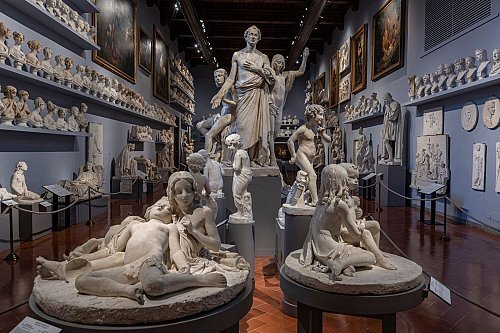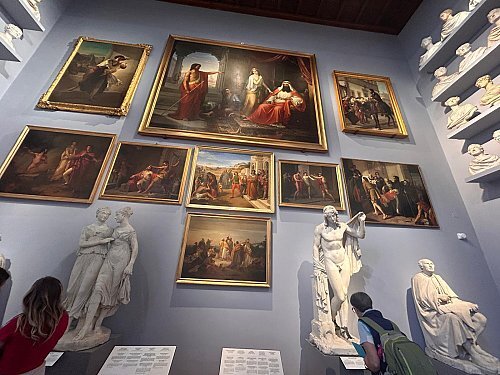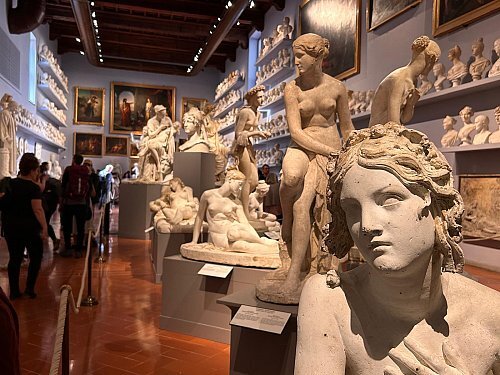Plaster Cast Gallery

In 1784, the friary hospital of San Matthew was converted into a gallery by the Grand Duke of Tuscany, Peter Leopold where he placed a number of important works so that students from nearby Accademia delle Belle Arti (Fine Arts Academy) could benefit by having before their eyes some exemplary masterpieces from history. Visitors to the "Gipsoteca Bartolini," therefore, find assembled here a collection of fine plaster casts dating back to the 19th century by Lorenzo Bartolini, sculptor of great fame and former esteemed professor at this same Academy.
The works exhibited in the Gipsoteca effectively reproduce the atelier of Bartolini by presenting a wide range of plaster models— be they public, private, or funereal—which are often celebratory in their intention. or monuments designed for tombs. The present hall displays two categories of 19th-century creations: the collection of plaster models from Bartolini and Pampaloni and that of paintings and sculptures recognized by the Academy of Fine Arts in Florence. Together they represent the evolution of Florentine art culture from Neoclassicism to Romanticism. Among the numerous works deserving citation as significant models are masterpieces dedicated to famous historical figures coming from Florence itself: Machiavelli (by Lorenzo Bartolini), Arnolfo di Cambio, Brunelleschi (made by Pampaloni) and rich foreign noblemen who lived in Florence during the 19th century.

A number of noble families in Russia, England, and Poland wanted busts and medallions from Lorenzo Bartolini and infant portraits from Luigi Pampaloni. In the two sculptors, continental Europe found a great deal to appreciate: much renowned for expressing grace and beauty plus a delicate psychological feature character disclosure.
Most of the statues and busts bring out what was in vogue in the 19th century, with most of them having hairstyles typical of the period and fashions that range from their heads to their feet. The selection of style represented is a choice that shows the sensitivities and dominant ideologies of the context represented. Early in the 19th century, France set fashion; trends depicted modestly voluminous hair tucks and simple vertical lines that defined women's tunics and dresses throughout neoclassical and Empire periods—a portrayal captured during his brilliant career by Lorenzo Bartolini.

Modeling Techniques
The models were made in clay, occasionally with patina finish, to simulate terracotta, marble, or bronze. Nails were added at uniform points as guides to later ensure correct depths while roughing out the marble block; at times they simulated the anatomy in the finished material. The art of modeling is an ancient and intricate technique employed by sculptors prior to working on the marble block. An engaging video in the Gipsoteca demonstrates this process, taking you through each step in creating a plaster cast model.
